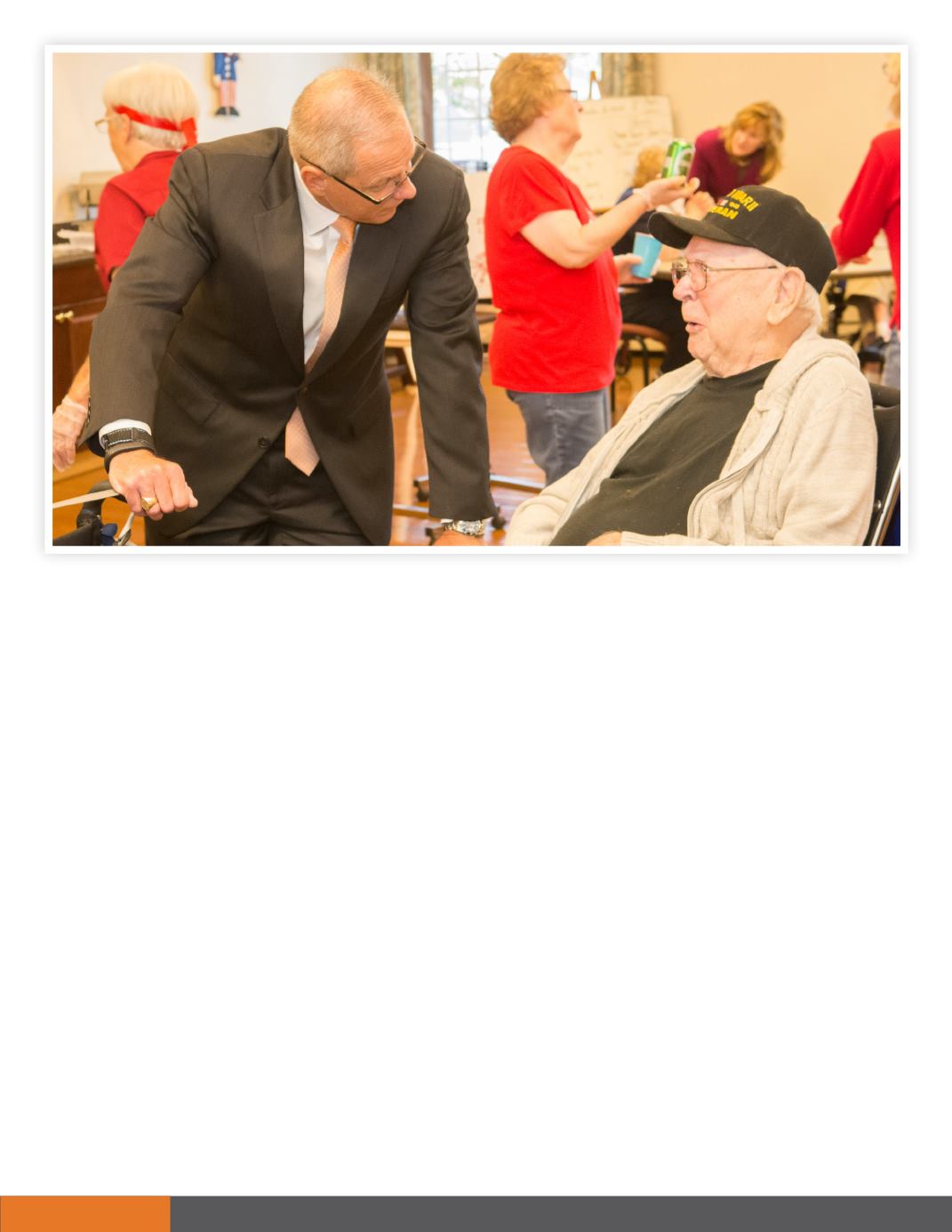
Business View - August 2015 165
diagnosed with schizophrenia, Huntington’s disease,
or Tourette’s syndrome. In 2014, Maryland’s use of
antipsychotic drugs for long-stay patients was 15.8
percent, well below the national rate of 19.4 percent
and a reduction of 20 percent since 2011.
As hospital stays have become shorter, skilled nursing
and rehabilitation centers have become a way for pa-
tients to receive high quality short-stay rehabilitation
at about half of the cost. As a result, two thirds of our
patients now return back to their homes in less than
a month.
On the financial front, while overall Medicaid payments
in Maryland have grown at an annual rate of 7.9 per-
cent between 2000 and 2012, payments to skilled
nursing centers have grown at a rate of only 5.2 per-
cent – a 34 percent reduction. As a result, Medicaid
funding does not fully cover the costs of providing ser-
vices to Medicaid patients. In 2013, Medicaid funding
for skilled nursing in Maryland totaled $1.288 billion
while total costs were $1.352 billion, creating a $64
million shortfall.
Technology Driving Changes
Going forward, measuring quality and clinical out-
comes will become more sophisticated. In the coming
years, the best and skilled nursing and rehabilitation
providers will not simply focus on reducing hospital
re-admissions, but must find new ways to share staff
and data, employ consumer technology, and engage
patients, themselves, to actively manage chronic dis-
eases such as high blood pressure, congestive heart
failure, diabetes, and depression.
The American Recovery and Reinvestment Act of 2009
(ARRA) pumped billions of dollars into hospitals and
physician practices to put in place electronic medical
records to track, better coordinate, and improve pa-
tient care; unfortunately the Act did not provide finan-
HEALTHCARE


